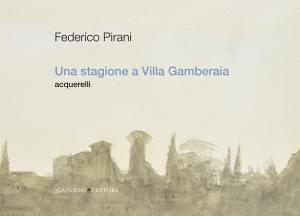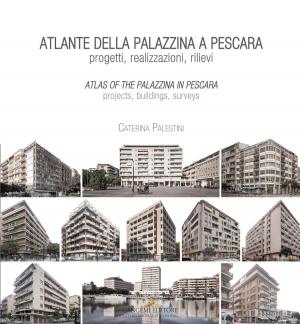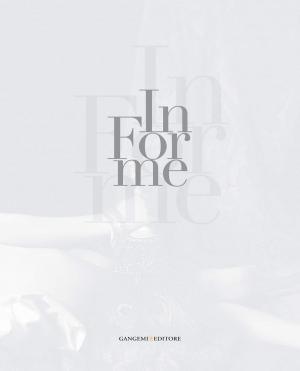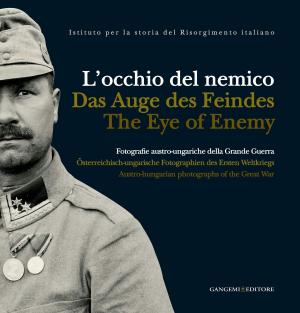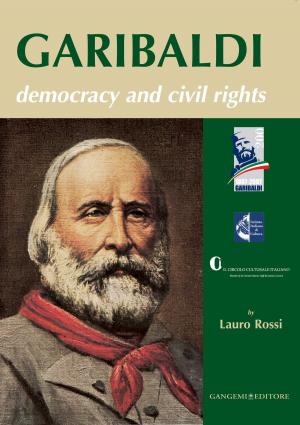Napoleone entra a New York. Chaim Koppelman e l’Imperatore. Opere 1957-2007
Napoleon entering New York. Chaim Koppelman and the Emperor. Works 1957-2007
Nonfiction, Art & Architecture, General Art, Art History| Author: | AA. VV. | ISBN: | 9788849294101 |
| Publisher: | Gangemi Editore | Publication: | October 15, 2015 |
| Imprint: | Gangemi Editore | Language: | Italian |
| Author: | AA. VV. |
| ISBN: | 9788849294101 |
| Publisher: | Gangemi Editore |
| Publication: | October 15, 2015 |
| Imprint: | Gangemi Editore |
| Language: | Italian |
Aveva nove anni Chaim Koppelman quando, per la prima volta, tratteggiò il profilo di Napoleone sul suo libro di geografia. Non un ritratto voluto, né ricercato, semplicemente il disegno di un bambino – talentuoso – che ferma sulla carta ciò che lo incuriosisce o colpisce, senza porsi troppe domande. Quell’appunto distratto è rimasto lì, apparentemente dimenticato, nella frenesia di una vita, anche artistica, che aveva velocemente cominciato a delineare il suo corso. Come tutte le passioni, però, quel profilo, nel tempo, ha fatto maturare sotterranee riflessioni, portando poi alla luce e nell’arte di Koppelman nuovi stimoli e lavori. E perfino un “nuovo” Napoleone, liberato dal suo essere concreto personaggio storico per diventare icona e simbolo addirittura dell’inconscio collettivo. E, forse, più ancora, realizzazione in carne ed ossa delle battaglie che portano alla costruzione dell’armonia. Koppelman punta, infatti, l’attenzione sul Napoleone che è in ognuno di noi. “La bellezza è sempre unione di opposti – era il manifesto del Realismo Estetico di Eli Siegel, corrente cui Koppelman aderì negli anni Quaranta – e unire gli opposti è quel che cerchiamo di realizzare in noi stessi”. Ecco l’intimo desiderio di Napoleone: portare la democrazia affermando però la propria autorità. Ed ecco l’intimo desiderio del Napoleone interiore: affermare il “noi”, mettendo in mostra l’“io”. Dal desiderio di illustrare questa scoperta, prende le mosse la ricerca di Koppelman, correndo attraverso dipinti, pastelli, acqueforti, incisioni su linoleum, acquerelli per giocare con i suoi stessi risultati. Napoleone osserva l’orizzonte artistico nei secoli, guardando perfino se stesso allo specchio, non per avere risposte ma forse per porre domande sulla vera natura dell’uomo e dei suoi desideri. [Dino Gasperini, Assessore alle Politiche Culturali e Centro Storico] Chaim Koppelman was only nine when he first drew a profile of Napoleon in his geography book. It wasn’t supposed to be a portrait, just a drawing by a talented child who puts down on paper things that strike him or arouse his curiosity, without wondering too much about them. That casual drawing is still there, apparently forgotten in the bustle of a lifetime, artistic and otherwise, that had soon begun to mark out its course. Like all passions, though, that profile of Napoleon caused subterranean reflections to ripen in Koppelman, bringing new stimuli and works to light and to his art. And even a “new” Napoleon, freed from being an actual historical figure and becoming an icon and symbol in the collective consciousness. And, perhaps still more significant, a flesh-and-blood personification of the battles that lead to the construction of harmony. Koppelman focuses attention on the Napoleon who’s in every one of us. “All beauty is a making one of opposites, and the making one of opposites is what we are going after in ourselves,” proclaimed the manifesto of Eli Siegel’s Aesthetic Realism, a movement that Koppelman joined in the 1940s. This was Napoleon’s innermost desire: to bring democracy, but at the same time to assert his own authority. And it’s also the innermost desire of our inner Napoleon: to assert the “we” while flaunting our own “I.” Koppelman’s research started from his desire to illustrate this discovery in paintings, pastels, etchings, linoleum prints and watercolors, playing with his results. Napoleon observes the artistic horizon over the centuries and even looks at himself in a mirror, not to find answers but perhaps to raise questions about the true nature of humans and their desires. [Dino Gasperini, City Councillor for Cultural Policies and the Historic Center]
Aveva nove anni Chaim Koppelman quando, per la prima volta, tratteggiò il profilo di Napoleone sul suo libro di geografia. Non un ritratto voluto, né ricercato, semplicemente il disegno di un bambino – talentuoso – che ferma sulla carta ciò che lo incuriosisce o colpisce, senza porsi troppe domande. Quell’appunto distratto è rimasto lì, apparentemente dimenticato, nella frenesia di una vita, anche artistica, che aveva velocemente cominciato a delineare il suo corso. Come tutte le passioni, però, quel profilo, nel tempo, ha fatto maturare sotterranee riflessioni, portando poi alla luce e nell’arte di Koppelman nuovi stimoli e lavori. E perfino un “nuovo” Napoleone, liberato dal suo essere concreto personaggio storico per diventare icona e simbolo addirittura dell’inconscio collettivo. E, forse, più ancora, realizzazione in carne ed ossa delle battaglie che portano alla costruzione dell’armonia. Koppelman punta, infatti, l’attenzione sul Napoleone che è in ognuno di noi. “La bellezza è sempre unione di opposti – era il manifesto del Realismo Estetico di Eli Siegel, corrente cui Koppelman aderì negli anni Quaranta – e unire gli opposti è quel che cerchiamo di realizzare in noi stessi”. Ecco l’intimo desiderio di Napoleone: portare la democrazia affermando però la propria autorità. Ed ecco l’intimo desiderio del Napoleone interiore: affermare il “noi”, mettendo in mostra l’“io”. Dal desiderio di illustrare questa scoperta, prende le mosse la ricerca di Koppelman, correndo attraverso dipinti, pastelli, acqueforti, incisioni su linoleum, acquerelli per giocare con i suoi stessi risultati. Napoleone osserva l’orizzonte artistico nei secoli, guardando perfino se stesso allo specchio, non per avere risposte ma forse per porre domande sulla vera natura dell’uomo e dei suoi desideri. [Dino Gasperini, Assessore alle Politiche Culturali e Centro Storico] Chaim Koppelman was only nine when he first drew a profile of Napoleon in his geography book. It wasn’t supposed to be a portrait, just a drawing by a talented child who puts down on paper things that strike him or arouse his curiosity, without wondering too much about them. That casual drawing is still there, apparently forgotten in the bustle of a lifetime, artistic and otherwise, that had soon begun to mark out its course. Like all passions, though, that profile of Napoleon caused subterranean reflections to ripen in Koppelman, bringing new stimuli and works to light and to his art. And even a “new” Napoleon, freed from being an actual historical figure and becoming an icon and symbol in the collective consciousness. And, perhaps still more significant, a flesh-and-blood personification of the battles that lead to the construction of harmony. Koppelman focuses attention on the Napoleon who’s in every one of us. “All beauty is a making one of opposites, and the making one of opposites is what we are going after in ourselves,” proclaimed the manifesto of Eli Siegel’s Aesthetic Realism, a movement that Koppelman joined in the 1940s. This was Napoleon’s innermost desire: to bring democracy, but at the same time to assert his own authority. And it’s also the innermost desire of our inner Napoleon: to assert the “we” while flaunting our own “I.” Koppelman’s research started from his desire to illustrate this discovery in paintings, pastels, etchings, linoleum prints and watercolors, playing with his results. Napoleon observes the artistic horizon over the centuries and even looks at himself in a mirror, not to find answers but perhaps to raise questions about the true nature of humans and their desires. [Dino Gasperini, City Councillor for Cultural Policies and the Historic Center]

